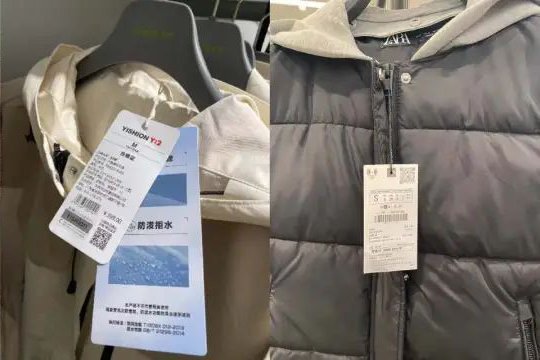Why are there hang tags on new clothes? What is their function?
When you purchase new clothing, you've likely noticed the small paper or plastic tags dangling from the garment, often attached by a plastic loop or string. These are known as hang tags, and while they may seem like a minor detail, they serve several important purposes for manufacturers, retailers, and consumers alike.

1. Branding and Marketing
Hang tags are a powerful branding tool. They display the brand's logo, name, and sometimes a slogan, helping to create a memorable impression. For many companies, the hang tag is an extension of their identity, showcasing their values—whether it's luxury, sustainability, or affordability. A well-designed tag can make a garment feel more premium and entice customers to choose one brand over another.
2. Providing Product Information
One of the primary functions of hang tags is to convey essential details about the clothing. This includes the size, material composition, care instructions, and country of origin. For example, a tag might indicate that a shirt is “100% organic cotton, machine washable, made in Italy.” This information helps consumers make informed decisions and ensures compliance with regulations that require transparency about a product's origins and care.
3. Pricing and Inventory Management
Hang tags often include a barcode or price, which streamlines the checkout process and aids retailers in tracking inventory. These tags allow stores to quickly scan items, update stock levels, and manage sales data. For consumers, the price tag eliminates confusion at the register, ensuring transparency about the cost.
4. Building Consumer Trust
Tags can also communicate certifications or special features, such as “fair trade,” “eco-friendly,” or “hypoallergenic.” These claims build trust with shoppers who prioritize ethical or environmentally conscious products. For instance, a hang tag might highlight that a jacket is made from recycled materials, appealing to sustainability-minded customers.
5. Enhancing the Unboxing Experience
In today's retail world, the unboxing experience matters. Hang tags contribute to the excitement of purchasing new clothes by adding a tactile, visual element. Some brands go further, using tags to share their story or include a thank-you note, fostering a deeper connection with the buyer.
Why Not Just Sew the Information In?
While some details, like care instructions, are often sewn into the garment, hang tags are temporary and designed to be removed. This keeps the clothing comfortable to wear while allowing brands to present information prominently during the purchase process. Sewn-in labels can't match the marketing flair or visibility of a hang tag on a store rack.
The Environmental Consideration
As sustainability becomes a priority, some question the necessity of hang tags, which can contribute to waste. In response, many brands are adopting eco-friendly alternatives, such as recyclable paper or biodegradable materials, to minimize their environmental footprint while still reaping the benefits of hang tags.
Conclusion
Hang tags are far more than a simple accessory—they're a multifunctional tool that bridges the gap between brands and consumers. From marketing and pricing to transparency and trust, these small tags play a big role in the retail experience. The next time you snip one off a new shirt, take a moment to appreciate the thought and strategy behind it.


